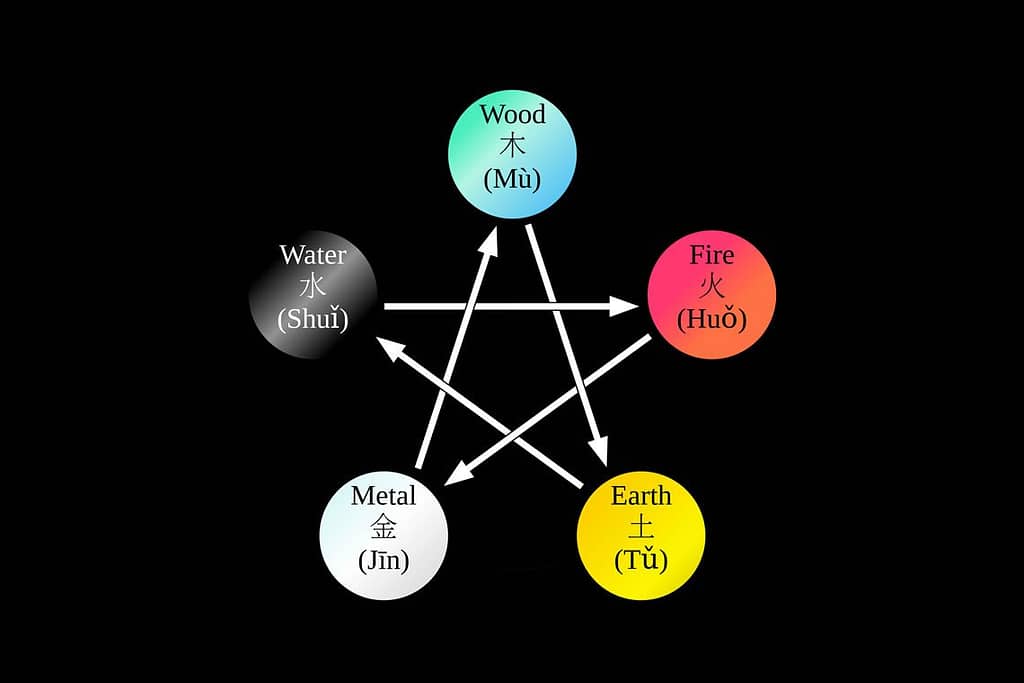What Are the Healing Mechanisms of Traditional Chinese Medicine?
Understanding Traditional Chinese Medicine’s Approach to Healing
To understand the Traditional Chinese Medicine (TCM) healing mechanisms, we have to understand how TCM foundations works. the goal is to promote health and prevent disease by achieving a state of balance between the body’s various systems and energies. One way to achieve this balance is by giving the body stimulation to invoke a healing response. This can be done through various techniques such as acupuncture, herbal remedies, dietary adjustments, Hijama therapy and other modalities. In this article, we will explore the mechanisms by which TCM promotes healing and the importance of Qi, blood, and body fluid in this process.

The Importance of Qi, Blood, and Body Fluids
In TCM, the body is believed to be sustained by three vital substances: qi, blood, and body fluids. Qi is the energy that flows through the body’s channels, while blood carries oxygen and nutrients to the tissues. Body fluids include lymph, sweat, saliva, and other fluids that keep the body hydrated and nourished. These three substances are believed to work together to maintain the body’s balance and promote health.
When the flow of qi, blood, and body fluids is disrupted, the body’s balance is disturbed, leading to various health issues. Therefore, promoting the flow and abundance of these substances is essential for maintaining health and preventing disease.
Analogies to Explain the Importance of Qi, Blood, and Body Fluids
To better understand the importance of qi, blood, and body fluids in TCM, let’s consider some analogies. Qi is often compared to a river, representing the constant flow of energy that maintains balance and vitality in the body. Blood is also compared to the water in the river, flowing through channels and vessels to nourish the organs and tissues. Just as water in a river nourishes the plants and animals that depend on it, blood nourishes the body’s organs and tissues with oxygen and nutrients. If the flow of blood is disrupted or blocked, it can lead to various health issues such as fatigue, dizziness, and poor circulation. Body fluids are like the groundwater that seeps through soil to nourish plants, providing hydration and nourishment to the body’s tissues that are not directly reached by the circulation system. In TCM, body fluids play a vital role in nourishing and lubricating the body’s tissues. These fluids include saliva, sweat, tears, cerebrospinal fluid, and other bodily secretions. If the body fluids are deficient, it can lead to dryness, thirst, and other health issues. Therefore, the analogies of qi as a river, blood as water in a river, and body fluids as groundwater emphasize the importance of these substances in supporting the body’s health and well-being.
How TCM Promotes Healing?
Now that we understand the importance of qi, blood, and body fluids in TCM, let’s explore how TCM replenishes Qi, Blood and Body Fluid. The two most common modalities used are Acupuncture and Chinese herbs. In TCM, the choice between using acupuncture or herbal remedies depends on the nature of the condition being treated. Acupuncture is often used for conditions related to the flow of qi and blood, while herbal remedies are often used for conditions related to the deficiency or excess of certain substances, such as blood or qi. However, in some cases, both acupuncture and herbal remedies may be used together to promote healing and restore balance within the body. Let’s explore both options here.
Tonifying Blood
Tonifying the blood through Chinese herbs and Acupuncture can help promote blood circulation and provide additional nutrients to nourish the muscles, skin, and other tissues. Examples of herbs and Acupuncture Points that can be used to tonify the blood include:
- Herbs that are commonly used to tonify the Blood:
- Dang Gui (Angelica sinensis): Also known as Chinese Angelica Root, this herb is often used to tonify the blood and promote circulation. It is commonly used in formulas for menstrual irregularities, anemia, and other blood deficiency conditions.
- Shu Di Huang (Rehmannia glutinosa): Also known as Chinese Foxglove Root, this herb is often used to tonify the blood and nourish the Yin (the cooling and nourishing aspect of the body). It is commonly used in formulas for fatigue, dizziness, and other symptoms of blood deficiency.
- Bai Shao (Paeonia lactiflora): Also known as White Peony Root, this herb is often used to tonify the blood and nourish the Liver. It is commonly used in formulas for menstrual irregularities, muscle cramps, and other conditions related to blood deficiency.
- Huang Qi (Astragalus membranaceus): Also known as Astragalus Root, this herb is often used to tonify the Qi (the vital energy that flows through the body) and strengthen the Spleen and Lung. It is also used to support blood production and circulation.
- E Jiao (Asini Corii Colla): Also known as Donkey-Hide Gelatin, this herb is often used to tonify the blood and nourish the Yin. It is commonly used in formulas for anemia, dry cough, and other symptoms of blood deficiency.
- Acupuncture points that are commonly used to tonify the blood:
- SP10 (Xuehai): This point is located on the inside of the thigh, about two finger widths above the knee. It is commonly used to tonify the blood and regulate menstruation.
- BL17 (Geshu): This point is located on the back, at the level of the lower border of the shoulder blade, between the spine and the scapula. It is commonly used to tonify the blood and nourish the Heart.
- SP6 (Sanyinjiao): This point is located on the inside of the leg, about four finger widths above the ankle. It is commonly used to tonify the blood and regulate menstruation.
- HT7 (Shenmen): This point is located on the inside of the wrist, at the crease of the wrist, in line with the little finger. It is commonly used to tonify the blood and nourish the Heart.
- ST36 (Zusanli): This point is located on the outside of the leg, about four finger widths below the knee. It is commonly used to tonify the Qi and Blood, as well as boost overall energy and stamina.
- SP10 (Xuehai): This point is located on the inside of the thigh, about two finger widths above the knee. It is commonly used to tonify the blood and regulate menstruation.
- BL17 (Geshu): This point is located on the back, at the level of the lower border of the shoulder blade, between the spine and the scapula. It is commonly used to tonify the blood and nourish the Heart.
- SP6 (Sanyinjiao): This point is located on the inside of the leg, about four finger widths above the ankle. It is commonly used to tonify the blood and regulate menstruation.
- HT7 (Shenmen): This point is located on the inside of the wrist, at the crease of the wrist, in line with the little finger. It is commonly used to tonify the blood and nourish the Heart.
- ST36 (Zusanli): This point is located on the outside of the leg, about four finger widths below the knee. It is commonly used to tonify the Qi and Blood, as well as boost overall energy and stamina.
Tonifying Qi and Propelling Blood
Qi is responsible for propelling blood to where it is needed in the body, allowing the organs to function properly. When the flow of Qi is disrupted, it can lead to similar health issues as blood deficiency, as the blood may not reach where it needs to be to a sufficient degree. Examples of herbs and Acupuncture points that can help tonify Qi and propel blood include:
- Some Chinese Herbs that help Tonify Qi and propel blood:
- Ren Shen (Panax ginseng): Also known as Ginseng Root, this herb is known for its ability to tonify the Qi, strengthen the Spleen and Lung, and promote the production of body fluids. It is often used in formulas for fatigue, weakness, and other symptoms of Qi deficiency.
- Huang Qi (Astragalus membranaceus): This herb is not only a blood tonifying herb, but it also tonifies Qi and helps propel blood. It is often used in formulas for fatigue, weakness, and other symptoms of Qi deficiency.
- Dang Shen (Codonopsis pilosula): Also known as Poor Man’s Ginseng, this herb is often used to tonify the Qi, strengthen the Spleen and Lung, and promote the production of body fluids. It is commonly used in formulas for fatigue, weakness, and other symptoms of Qi deficiency.
- Bai Zhu (Atractylodes macrocephala): This herb is known for its ability to tonify the Qi, strengthen the Spleen, and promote digestion. It is commonly used in formulas for fatigue, diarrhea, and other symptoms of Qi deficiency.
- Some Acupuncture points that help Tonify Qi and propel blood:
- CV4 (Guanyuan): This point is located on the lower abdomen, about two finger widths below the belly button. It is commonly used to tonify the Qi and nourish the Kidneys.
- ST36 (Zusanli): This point is located on the outside of the leg, about four finger widths below the knee. It is commonly used to tonify the Qi and Blood, as well as boost overall energy and stamina.
- LV3 (Taichong): This point is located on the top of the foot, between the first and second toes. It is commonly used to tonify the Liver and promote the smooth flow of Qi.
- LI4 (Hegu): This point is located on the back of the hand, between the thumb and index finger. It is commonly used to tonify the Qi and promote the flow of Qi and Blood.
- LI10 (Shousanli): This point is located on the forearm, about two thumb widths above the wrist crease, and is commonly used to tonify Qi and promote blood circulation in the arms and hands.
Tonifying Body Fluid
Body fluids, such as sweat, saliva, and tears, play a vital role in nourishing and lubricating the body’s tissues. An imbalance in body fluids or an inability to nourish the body can manifest as dryness, thirst, and constipation. Chinese herbs and Acupuncture points that are commonly used to help generate body fluids include:
- Chinese Herbs that are commonly used to Tonify Body Fluids:
- Mai Men Dong (Ophiopogon japonicus): Also known as Dwarf Lilyturf Tuber, this herb is known for its ability to generate fluids and moisten the Lungs. It is often used in formulas for dry cough, dry throat, and other symptoms of dryness.
- Sheng Di Huang (Rehmannia glutinosa): Also known as Chinese Foxglove Root, this herb is known for its ability to nourish the Yin (the cooling and nourishing aspect of the body) and generate fluids. It is often used in formulas for dry mouth, dry eyes, and other symptoms of Yin deficiency.
- Gou Qi Zi (Lycium barbarum): Also known as Goji Berry or Wolfberry, this herb is known for its ability to tonify the Yin and generate fluids. It is often used in formulas for dry eyes, blurred vision, and other symptoms of Yin deficiency.
- Tian Hua Fen (Trichosanthes kirilowii): Also known as Snakegourd Root, this herb is known for its ability to generate fluids and clear heat. It is often used in formulas for thirst, irritability, and other symptoms of fluid deficiency with heat.
- Yu Zhu (Polygonatum odoratum): Also known as Solomon’s Seal Rhizome, this herb is known for its ability to generate fluids and nourish the Yin. It is often used in formulas for dry cough, dry mouth, and other symptoms of dryness
- Some Acupuncture points to help genertae body fluids:
- SP6 (Sanyinjiao): This point is located on the inside of the leg, about four finger widths above the ankle. It is commonly used to nourish Yin and generate body fluids, as well as regulate menstruation.
- KD6 (Zhaohai): This point is located on the inside of the ankle, in the depression between the ankle bone and the Achilles tendon. It is commonly used to tonify the Yin and generate body fluids, as well as regulate menstruation.
- LU9 (Taiyuan): This point is located on the wrist, on the radial side of the radial artery, about one thumb width above the wrist crease. It is commonly used to tonify the Yin and generate body fluids, as well as regulate Lung function.
- CV4 (Guanyuan): This point is located on the lower abdomen, about two finger widths below the belly button. It is commonly used to tonify the Yin and generate body fluids, as well as nourish the Kidneys.
- HT6 (Yinxi): This point is located on the inside of the wrist, in the depression between the ulnar artery and the tendon of the flexor carpi ulnaris muscle. It is commonly used to tonify the Yin and generate body fluids, as well as calm the mind.
Now that we have briefly understood the role of Qi, Blood, and Body fluids and how Traditional Chinese Medicine approaches healing, we hope this article has provided you with valuable insights. We at Huatuo Clinic are committed to providing you with the best possible care and support on your journey towards optimal health and well-being. If you are interested in experiencing the benefits of Traditional Chinese Medicine for yourself, we invite you to come visit us at our clinic. Our experienced practitioners are here to listen, understand, and tailor treatment plans to meet your individual needs. Contact us today to schedule your appointment and take the first step towards a healthier, more balanced you








